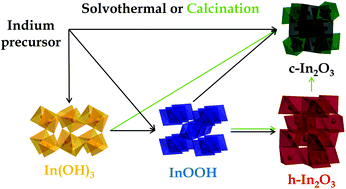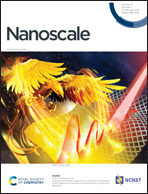Phase control for indium oxide nanoparticles†
Abstract
The indium oxides, c-In2O3, h-In2O3, InOOH and In(OH)3, constitute an important class of wide band gap semiconductors. Synthesis of any indium oxide phase involves manoeuvring in a complex matrix of process parameters, and some phases are only obtained through controlled phase transformations. Considering the widespread use of indium oxide semiconductors it is restrictive that no coherent picture exists of the formation mechanisms of individual phases and phase transformations between them. Here we access the indium oxide system through solvothermal synthesis and/or powder calcinations, and we use in situ X-ray scattering in combination with thermal analysis to investigate the complex phase relations. This allows us to unravel synthesis pathways for the different indium oxide phases, and the insight is used to develop procedures for scalable continuous flow solvothermal synthesis. Direct formation of crystalline nanomaterials from precursor solutions was observed for In(OH)3, InOOH and cubic c-In2O3, while formation of hexagonal h-In2O3 requires thermal decomposition of InOOH. The in situ X-ray scattering data reveal new phase transformations from In(OH)3 to InOOH, and from InOOH to c-In2O3. Interestingly, solvothermal synthesis conditions facilitate different reactions mechanisms than dry powder calcinations, and both In(OH)3 and InOOH have different transformations under dry and wet conditions.

- This article is part of the themed collection: 2021 Nanoscale HOT Article Collection


 Please wait while we load your content...
Please wait while we load your content...